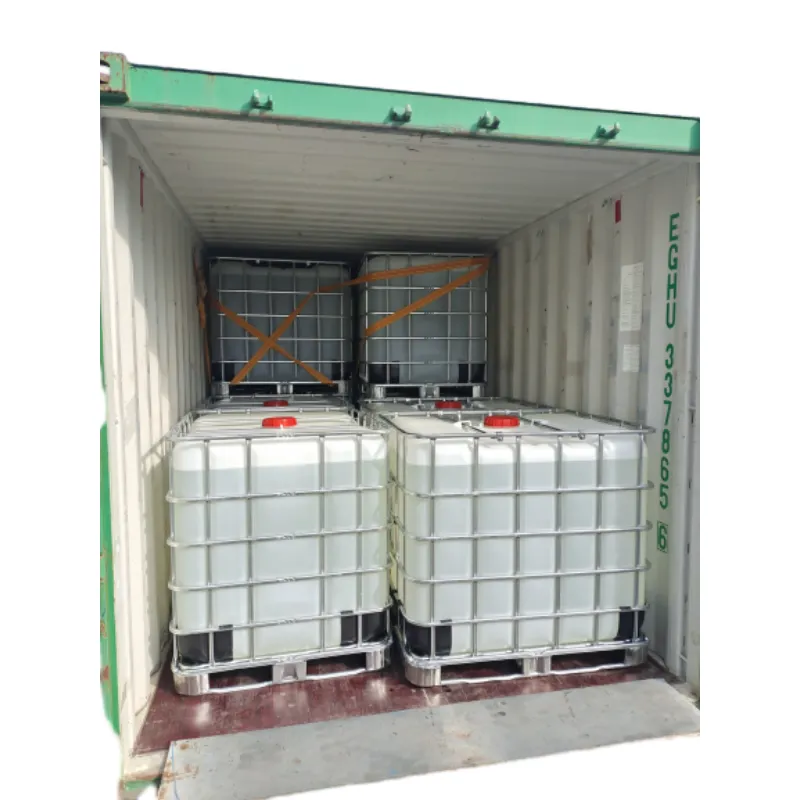
Triisopropanolamine (TIPA) – High Purity, Cement Grade
Hands-on Notes from the Plant Floor: What Triisopropanolamine Is Doing in 2025
If you work in cement grinding, coatings, or even metalworking fluids, you’ve probably bumped into Triisopropanolamine (TIPA). It’s one of those quiet performers—an alkanolamine with both amino and hydroxyl groups—showing up as a strength enhancer, neutralizer, and sometimes a corrosion-inhibition helper. To be honest, it’s not flashy chemistry, but it’s incredibly practical. And buyers keep telling me—especially from midsize cement plants—that a small dose changes the week’s production math.

Industry trend watch
Two pressures dominate: lower clinker factor in cement (hello, SCMs) and stricter VOC/sustainability rules in coatings. Triisopropanolamine fits both narratives—improving late strength in blended cements and acting as a low-odor neutralizing amine in waterborne formulations. Demand is steady-to-rising, with more buyers asking for REACH-ready paperwork and tighter color specs (APHA ≤ 50, sometimes ≤ 30 for sensitive coatings).
Typical specs (real-world values may vary)
| Chemical name | Triisopropanolamine (TIPA) |
| CAS / Molecular formula / MW | 122-20-3 / C9H21NO3 / ≈191.27 g/mol |
| Appearance | Colorless to pale-yellow viscous liquid |
| Assay (TIPA) | 85% or 99% grades available |
| Water | ≤ 0.5% (KF, ASTM D6304) |
| Color (APHA) | ≤ 50 (ASTM D1209) |
| Density @20°C | ≈1.03 g/cm³ (ASTM D4052) |
| pH (1% aq.) | ≈10.5–11.5 |
| Flash point (CC) | ≈145°C |
How it’s made (short process walk-through)
Materials: propylene oxide + ammonia; catalytic ring-opening → mono-, di-, and Triisopropanolamine. Methods: controlled stoichiometry, temperature moderation, then fractional distillation to isolate TIPA. QC: GC purity; water by Karl Fischer (D6304); color (D1209); density (D4052); residuals by GC-MS. Typical shelf life: 18–24 months in sealed HDPE drums/IBCs; store cool and dry.

Where it’s used (and why it works)
- Cement grinding aids: boosts late strength, reduces pack-set, improves mill throughput; compliant with ASTM C465 processing-addition rules.
- Concrete admixtures: enhancer for mortars/pastes per ASTM C109 or EN 196-1 test methods.
- Waterborne coatings & adhesives: neutralizing amine for acrylics; good balance of volatility and odor.
- Metalworking fluids: co-emulsifier, pH buffer; supports corrosion inhibition packages.
- Textile, paper chemicals, and surfactant salt formation—niche but growing.
Advantages buyers mention
Many customers say Triisopropanolamine shines in mixed-SCM systems (slag, fly ash). It seems that 0.03–0.08% bwoc dosing often tightens 28-day variability. Also, surprisingly, color consistency matters more in premium coatings than we once thought—APHA control pays off.
Vendor snapshot (quick comparison)
| Vendor | Grades | Lead time | Certs | Packaging | Customization |
|---|---|---|---|---|---|
| Tenger Chemical (Origin: 3-2-501, North Courtyard, West District, Jiuli Courtyard, Yuhua District, Shijiazhuang, Hebei, China) | 85%, 99% | ≈2–3 weeks | ISO 9001, REACH-ready | 200 kg drums, 1000 L IBC, ISO tank | Color, water, inhibitor, label |
| Vendor A (Global) | 85% | 3–5 weeks | ISO 9001 | Drums / IBC | Limited |
| Vendor B (Regional) | 99% | 1–2 weeks (stock) | ISO 9001/14001 | Drums | Label only |
Case study: cement strength gain (field-lab blend)
A South Asian 2.5 Mtpa plant trialed Triisopropanolamine at 0.05% bwoc on a clinker + 25% slag blend. Using EN 196-1 mortars, 7-day strength improved ≈5.2% and 28-day ≈8.1% vs. control; false set unchanged. Pack-set index fell by ≈12% (ASTM C465 method guidance). Mill throughput nudged up ≈3%—modest, but real. The lab later confirmed water content at 0.2% (KF), APHA 30, and GC purity 99.1%.

Customization checklist
- Assay: 85% or 99%; tighter water control (≤0.2%) on request.
- Color targets: APHA ≤30 for sensitive coatings.
- Additive package: nitrite-free inhibitor for steel totes.
- Docs: COA, SDS (GHS), REACH support, RoHS statement, food-contact exclusion (as needed).
Testing standards referenced: ASTM C465, ASTM C109, EN 196-1, ASTM D6304, ASTM D1209, ASTM D4052. Always validate performance in your own system—real-world use may vary.
Authoritative citations
- ASTM C465 – Standard Specification for Processing Additions for Use in the Manufacture of Hydraulic Cements.
- EN 196-1 – Methods of testing cement – Determination of strength.
- ASTM C109/C109M – Compressive Strength of Hydraulic Cement Mortars.
- ASTM D6304 – Standard Test Method for Water in Petroleum Products and Lubricants by Karl Fischer Titration.
- ECHA – Triisopropanolamine substance information (REACH). https://echa.europa.eu
- PubChem – Triisopropanolamine (CID 8278). https://pubchem.ncbi.nlm.nih.gov
-
What Is a Food Additive? Global Insights, Applications & Future TrendsNewsNov.24,2025
-
968 Sweetener: The Modern Solution for Health-Conscious SweeteningNewsNov.23,2025
-
Discover the Benefits and Uses of 965 Sweetener (Erythritol) | Tenger ChemicalNewsNov.23,2025
-
961 Sweetener - A Next-Gen Sugar Alternative for Health and IndustryNewsNov.23,2025
-
Understanding 960 Sweetener: The Modern Sugar Alternative for Health and IndustryNewsNov.22,2025
-
Everything You Need to Know About 955 950 Sweeteners – Benefits, Uses, and TrendsNewsNov.22,2025
-
953 Sweetener: Global Insights, Applications, and Future TrendsNewsNov.21,2025
Hebei Tenger Chemical Technology Co., Ltd. focuses on the chemical industry and is committed to the export service of chemical raw materials.
-

view more DiethanolisopropanolamineIn the ever-growing field of chemical solutions, diethanolisopropanolamine (DEIPA) stands out as a versatile and important compound. Due to its unique chemical structure and properties, DEIPA is of interest to various industries including construction, personal care, and agriculture. -

view more TriisopropanolamineTriisopropanolamine (TIPA) alkanol amine substance, is a kind of alcohol amine compound with amino and alcohol hydroxyl, and because of its molecules contains both amino and hydroxyl. -

view more Tetramethyl Thiuram DisulfideTetramethyl thiuram disulfide, also known as TMTD, is a white to light-yellow powder with a distinct sulfur-like odor. It is soluble in organic solvents such as benzene, acetone, and ethyl acetate, making it highly versatile for use in different formulations. TMTD is known for its excellent vulcanization acceleration properties, which makes it a key ingredient in the production of rubber products. Additionally, it acts as an effective fungicide and bactericide, making it valuable in agricultural applications. Its high purity and stability ensure consistent performance, making it a preferred choice for manufacturers across various industries.





